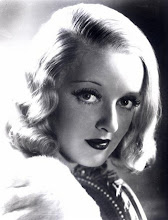By pure convenient coincidence, I saw Hitchcock's Rear Window in my Film History class last semester on the same day that I saw his earlier film, Rope, in The Movie Industry. It was my first time watching both movies, and seeing them just a few hours apart I couldn't help comparing the two and drawing some conclusions about Hitchcock as an auteur.
To some extent, Rear Window seems to be Hitchcock's second attempt at the continuous-take effect that he first tried out in Rope. At least, he seems to have learned from his previous mistakes; Rear Window is shot with a lot of long takes and a fluidly moving camera, but there are cuts where necessary to keep the audience interested visually as well as psychologically. Additionally, there is often a lot more going on within the frame than there was in Rope. Although both films take place entirely within the confines of one apartment, Rope kept the camera confined indoors, with the large windows serving only as a backdrop and to indicate the passage of time. In Rear Window, the titular pane offers the camera -- along with protagonist L.B. Jeffries -- an escape. Through his own camera lens, Jeff can view the entire apartment building (which, by the way, was the largest set ever built at the time the film was made) or zoom in on any one residence. Likewise, there are many different areas of the screen on which the audience can concentrate during those long takes, because the frame is filled with the activities of many different interesting and eccentric minor characters.

In addition to being a great technical improvement over Rope, Rear Window is a quintessential psychological thriller. The decision to trap the camera inside with Jeff gives viewers a keen sense of his growing fear and desperation, even when they may find themselves siding with other characters who think he's off his rocker. At any given time, the audience only has as much information as Jeff does, and as a result shares his feeling of helplessness. This emotional connection, formed from the beginning of the film onward, increases the suspense felt at the film's climax, when finally Jeff begins to hear ominous footsteps outside his own door.



No comments:
Post a Comment